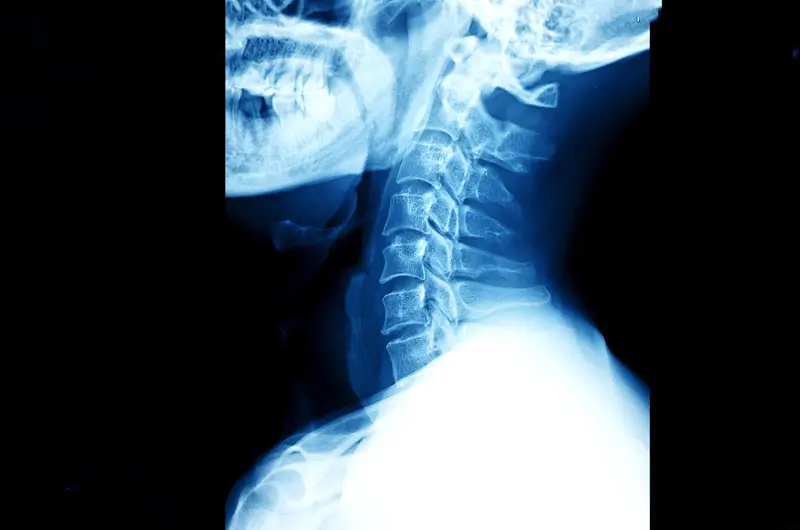Cervical disc disorders and displacements are the other common conditions treated at orthopedic practices apart from fractures and injuries. With the implementation of ICD-10, practices require more specific data to report cervical disorders and displacements and ensure accurate orthopedics medical coding to receive timely reimbursement. There are specific codes for disorders depending upon the various regions of the cervical spine (high cervical C2-3 and C3-4; mid-cervical C4-5, C5-6, and C6-7; cervicothoracic C7-T1). If the region is unclear, you should use unspecific region codes. The new coding system requires the indication of myelopathy and radiculopathy as well. Let’s consider the different types of cervical disc disorders.
Cervical Disc Degeneration
This condition occurs when the intervertebral discs at the cervical region degenerate or break down due to aging (repeated daily stress). This is the common cause for stiff neck and requires physical examination and even imaging studies for diagnosis. There was only one code in ICD-9 to report this condition.
- 722.4: Degeneration of cervical intervertebral disc
In ICD-10 medical coding, there are four codes to report this condition depending upon the cervical region.
- M50.30: Other cervical disc degeneration, unspecified cervical region
- M50.31: Other cervical disc degeneration, high cervical region
- M50.32: Other cervical disc degeneration, mid-cervical region
- M50.33: Other cervical disc degeneration, cervicothoracic region
Cervical Disc Herniation
This condition occurs when the inner core of a disc in the neck herniates, or leaks out of the disc. The pain radiates along the nerve pathway to the arm causing neck pain, arm pain along with numbing and tingling. Special imaging diagnostic studies may be required to better diagnose this condition. The diagnostic codes are as follows.
ICD-9
- 722.0: Displacement of cervical intervertebral disc without myelopathy
ICD-10
- M50.20: Other cervical disc replacement, unspecified cervical region
- M50.21: Other cervical disc replacement, high cervical region
- M50.22: Other cervical disc replacement, mid-cervical region
- M50.23: Other cervical disc replacement, cervicothoracic region
Cervical Disc Disorder with Myelopathy
This refers to a cervical disorder that results in myelopathy (spinal cord gets compressed and causes incoordination in the hands, a heavy feeling in the legs, or numbness and tingling in the legs). Imaging diagnostic studies are required to diagnose cervical disc disorder with myelopathy. The codes are:
ICD-9
- 722.71: Intervertebral disc disorder with myelopathy, cervical region
ICD-10
- M50.00: Cervical disc disorder with myelopathy, unspecified cervical region
- M50.01: Cervical disc disorder with myelopathy, high cervical region
- M50.02: Cervical disc disorder with myelopathy, mid-cervical region
- M50.03: Cervical disc disorder with myelopathy, cervicothoracic region
Cervical Disc Disorder with Radiculopathy
This refers to the condition in which a cervical disc disorder causes radiculopathy in which a nerve in the neck is irritated while leaving the spinal canal (as the nerve root is being pinched by a herniated disc or bone spur). Physical examination and diagnostic tests are required to diagnose this condition. In ICD-9, this condition is specified under other cervical disorders.
- 722.91: Other and unspecified disc disorder, cervical region
There are specific codes for this condition in ICD-10 such as:
- M50.10: Cervical disc disorder with radiculopathy, unspecified cervical region
- M50.11: Cervical disc disorder with radiculopathy, high cervical region
- M50.12: Cervical disc disorder with radiculopathy, mid-cervical region
- M50.13: Cervical disc disorder with radiculopathy, cervicothoracic region
Other Disorders
If there is a single code to report all other cervical disc disorders and unspecified cervical disc disorders in ICD-9, there are separate codes for other cervical disorders and unspecified cervical disc disorders in ICD-10.
- M50.80: Other cervical disc disorders, unspecified cervical region
- M50.81: Other cervical disc disorders, high cervical region
- M50.82: Other cervical disc disorders, mid-cervical region
- M50.83: Other cervical disc disorders, cervicothoracic region
- M50.90: Cervical disc disorder, unspecified cervical region
- M50.91: Cervical disc disorder, high cervical region
- M50.92: Cervical disc disorder, mid-cervical region
- M50.93: Cervical disc disorder, cervicothoracic region
Detailed documentation is vital for accurate ICD-10 coding of cervical disorders and displacement. With the expansion of codes and increased specificity, a good option is to consider obtaining reliable medical billing and coding services. They will ensure accurate ICD-10 documentation and coding and thereby avoid any sudden drop in reimbursement that may occur due to coding errors.




